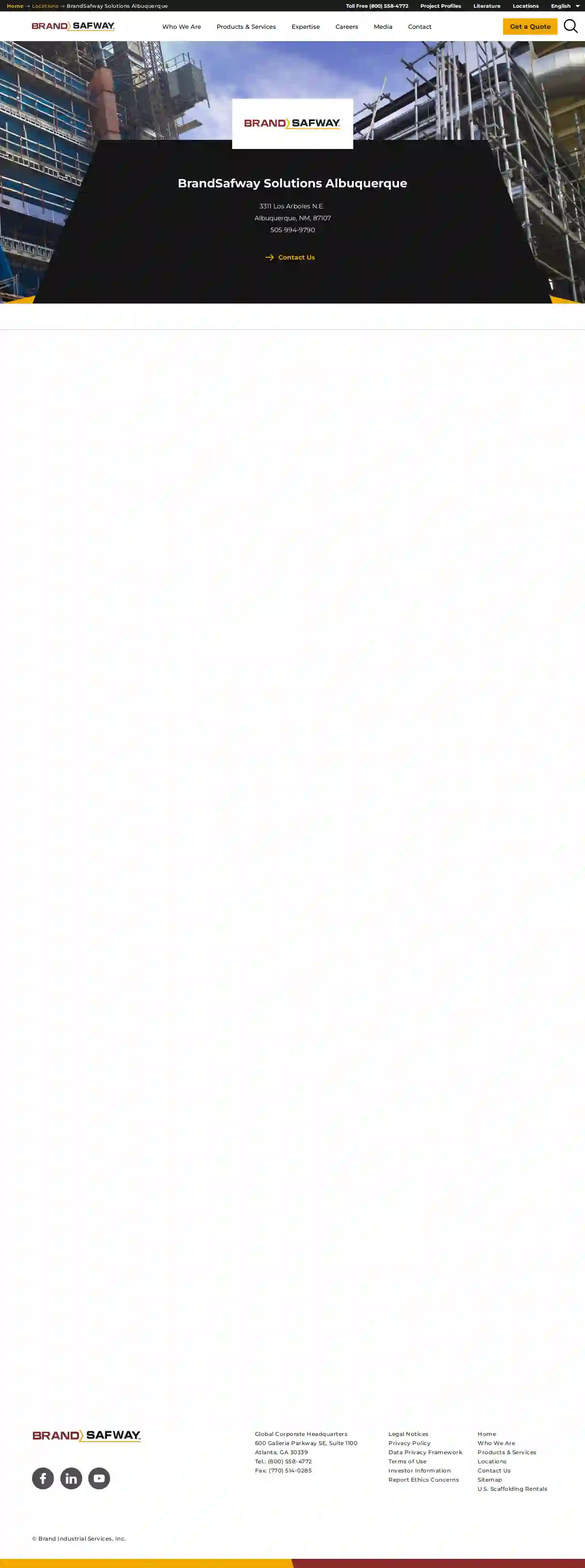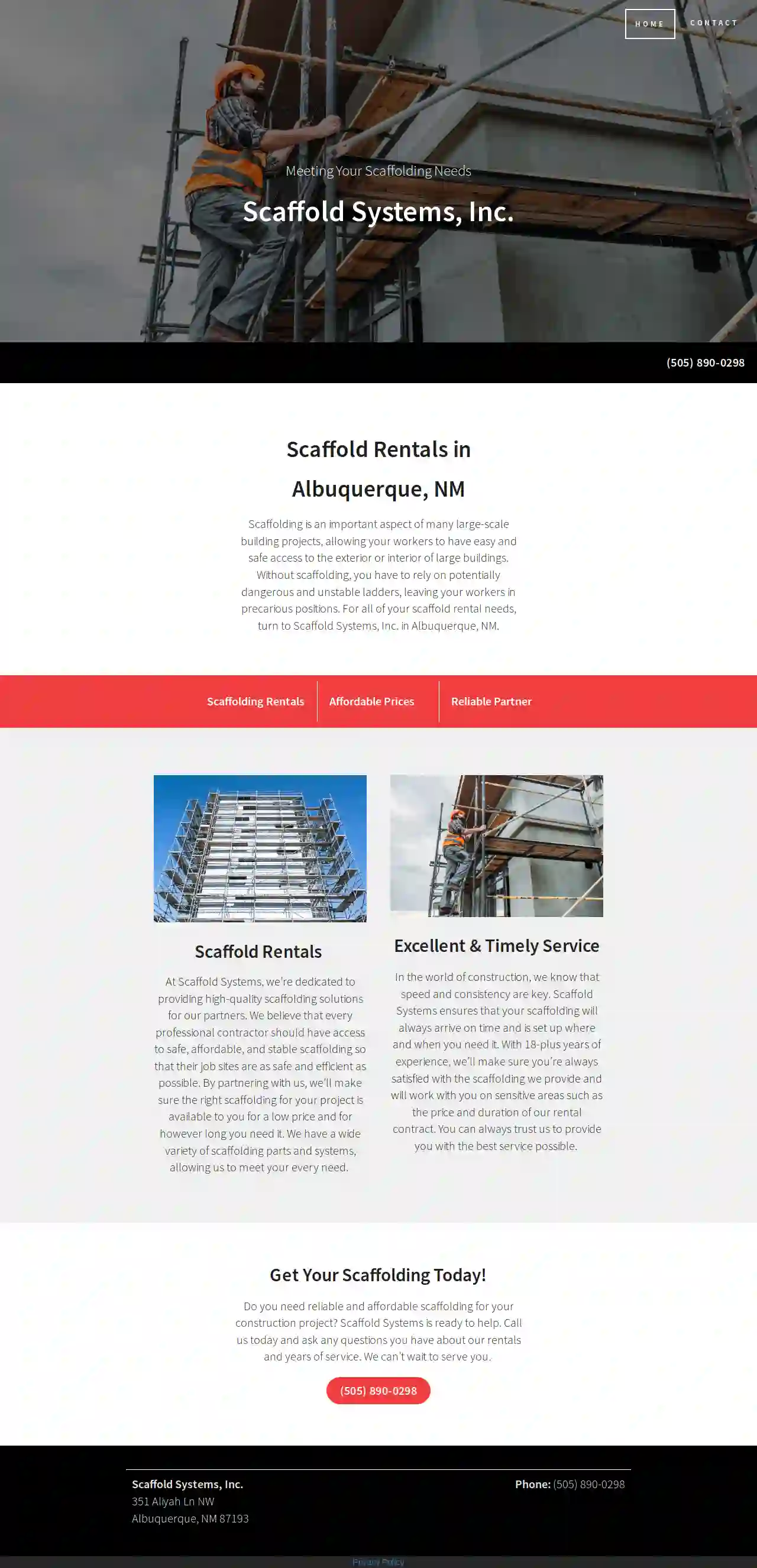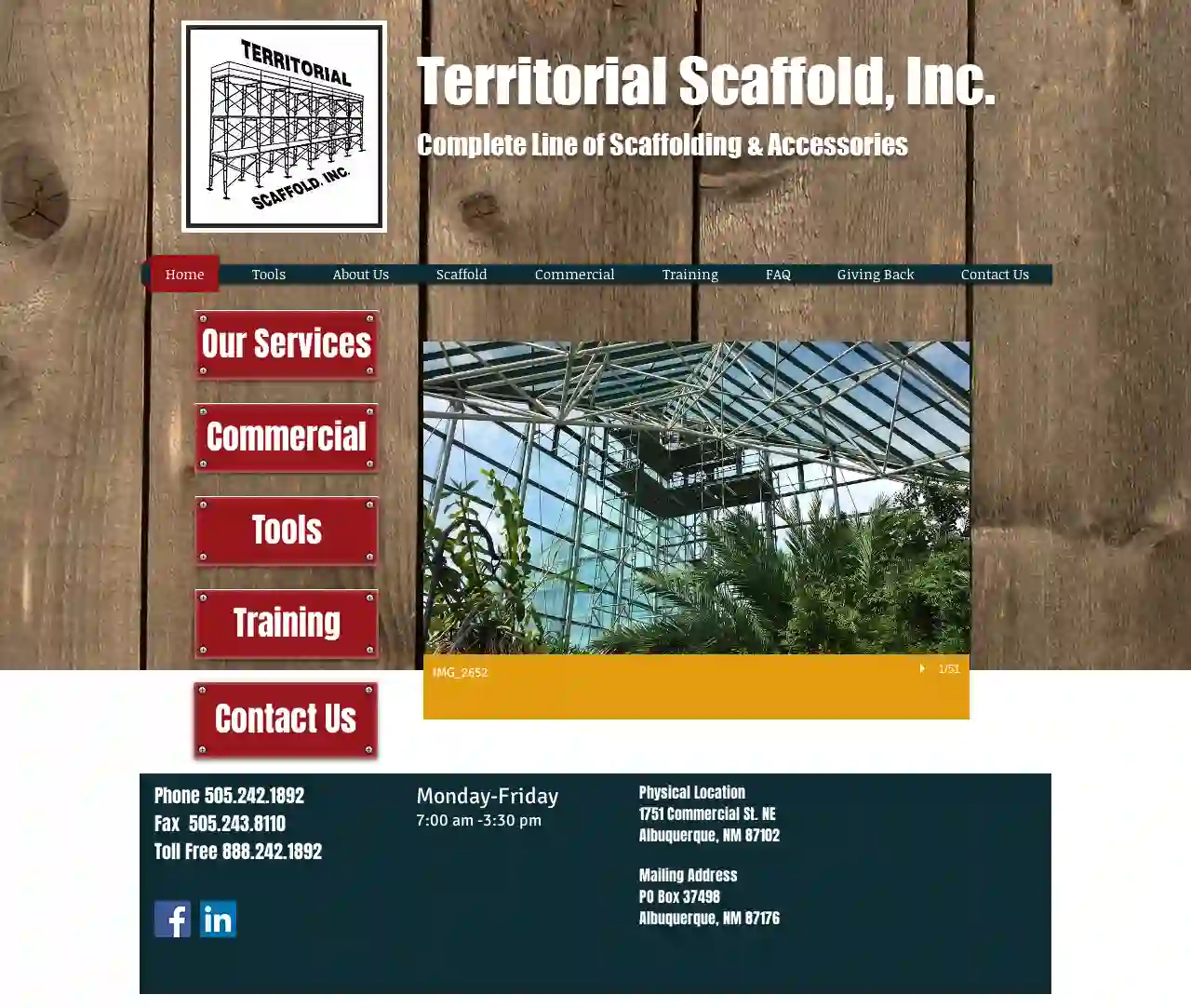Scaffolding Rental Portales
Best Scaffolding Rental in Portales
Receive up to 3 Scaffolding Hire quotes for your project today! Compare profiles, reviews, accreditations, portfolio, etc... and choose the best service.

BrandSafway Solutions Albuquerque
4.18 reviews1234 BrandSafway Blvd, Albuquerque, 87102, USBrandSafway is a leading provider of access solutions, including scaffolding, aerial work platforms, and forming and shoring equipment. With a strong commitment to safety, quality, and customer satisfaction, BrandSafway offers a wide range of services tailored to meet the unique needs of clients across various industries. Their team of experienced professionals works closely with clients to understand their requirements and deliver customized solutions that enhance efficiency and productivity. BrandSafway's mission is to provide innovative access solutions that ensure safe and efficient project execution, while maintaining a focus on sustainability and environmental responsibility.
- Services
- Why Us?
- Accreditations
- Our Team
- Testimonials
Get Quote
Scaffold Systems Inc
36 reviews351 Aliyah Ln NW, Albuquerque, 87193, USScaffold Systems, Inc. is a dedicated provider of affordable and convenient scaffolding rentals to contractors and homeowners in Albuquerque, NM. With nearly two decades of experience, they offer a wide variety of scaffolding parts and systems to meet every need. Their commitment to safety, efficiency, and customer satisfaction sets them apart as a reliable partner for construction projects.
- Services
- Why Us?
- Gallery
Get Quote
Territorial Scaffold Inc
4.725 reviewsTerritorial Scaffold, Inc., Albuquerque, NM, 1751 Commercial St. NE, 87102, USTerritorial Scaffold, Inc. is a leading provider of scaffolding and accessories, offering a comprehensive range of services including commercial scaffolding, training, and more. With a strong commitment to quality and customer satisfaction, the company operates from its physical location at 1751 Commercial St. NE, Albuquerque, NM 87102, and can be contacted via phone at 505.242.1892, fax at 505.243.8110, or toll-free at 888.242.1892. The business is open Monday through Friday from 7:00 am to 3:30 pm.
- Services
- Why Us?
- Accreditations
- Our Team
- Testimonials
- Gallery
Get Quote- Al
All American Scaffold & Shoring
11 reviewsAlbuquerque, US- Services
- Why Us?
Get Quote
Over 2,353+ Scaffolding Businesses onboarded
Our scaffolding companies operate in Portales & beyond!
ScaffoldingHQ has curated and vetted the Best Scaffolding Contractors in Portales. Find the most trustworthy business today.
Frequently Asked Questions About Scaffolding Rental
- Small Repairs or Painting: A rolling tower or mobile scaffolding is often sufficient for smaller projects, providing a stable platform at lower heights.
- Roof Work: Roofing projects typically require taller and more robust scaffolding, like tube and clamp or system scaffolding.
- Two-Story Homes: For accessing higher levels of a two-story home, you may need a larger system scaffolding structure.
- Limited Access: If space is restricted, consider a narrow-width scaffolding tower or suspended scaffolding.
- Underestimating Scaffolding Needs: Accurately assess the required scaffolding size and type.
- Not Comparing Quotes: Get quotes from multiple rental companies to find the best deal.
- Ignoring Safety: Prioritize safety by hiring qualified erectors and ensuring workers follow safety protocols.
- Overlooking Permits: Obtain any necessary permits before erecting scaffolding.
- Not Inspecting the Scaffolding: Carefully inspect the scaffolding upon delivery and before each use.
- Modifying Scaffolding without Authorization: Never alter the scaffolding without consulting the rental company or an engineer.
- Base Plates and Adjusters: Use adjustable base plates to level the scaffolding legs on uneven surfaces.
- Ground Preparation: Level the ground as much as possible before erection.
- Bracing and Support: Additional bracing and support may be necessary to compensate for uneven ground conditions.
- Professional Assessment: A qualified scaffolding erector should assess the ground and determine the appropriate measures for safe erection.
What type of scaffolding is best for home use?
Can I modify or alter the scaffolding after it's erected?
What are some common mistakes to avoid when renting scaffolding?
Can I use scaffolding on uneven ground?
What type of scaffolding is best for home use?
- Small Repairs or Painting: A rolling tower or mobile scaffolding is often sufficient for smaller projects, providing a stable platform at lower heights.
- Roof Work: Roofing projects typically require taller and more robust scaffolding, like tube and clamp or system scaffolding.
- Two-Story Homes: For accessing higher levels of a two-story home, you may need a larger system scaffolding structure.
- Limited Access: If space is restricted, consider a narrow-width scaffolding tower or suspended scaffolding.
Can I modify or alter the scaffolding after it's erected?
What are some common mistakes to avoid when renting scaffolding?
- Underestimating Scaffolding Needs: Accurately assess the required scaffolding size and type.
- Not Comparing Quotes: Get quotes from multiple rental companies to find the best deal.
- Ignoring Safety: Prioritize safety by hiring qualified erectors and ensuring workers follow safety protocols.
- Overlooking Permits: Obtain any necessary permits before erecting scaffolding.
- Not Inspecting the Scaffolding: Carefully inspect the scaffolding upon delivery and before each use.
- Modifying Scaffolding without Authorization: Never alter the scaffolding without consulting the rental company or an engineer.
Can I use scaffolding on uneven ground?
- Base Plates and Adjusters: Use adjustable base plates to level the scaffolding legs on uneven surfaces.
- Ground Preparation: Level the ground as much as possible before erection.
- Bracing and Support: Additional bracing and support may be necessary to compensate for uneven ground conditions.
- Professional Assessment: A qualified scaffolding erector should assess the ground and determine the appropriate measures for safe erection.